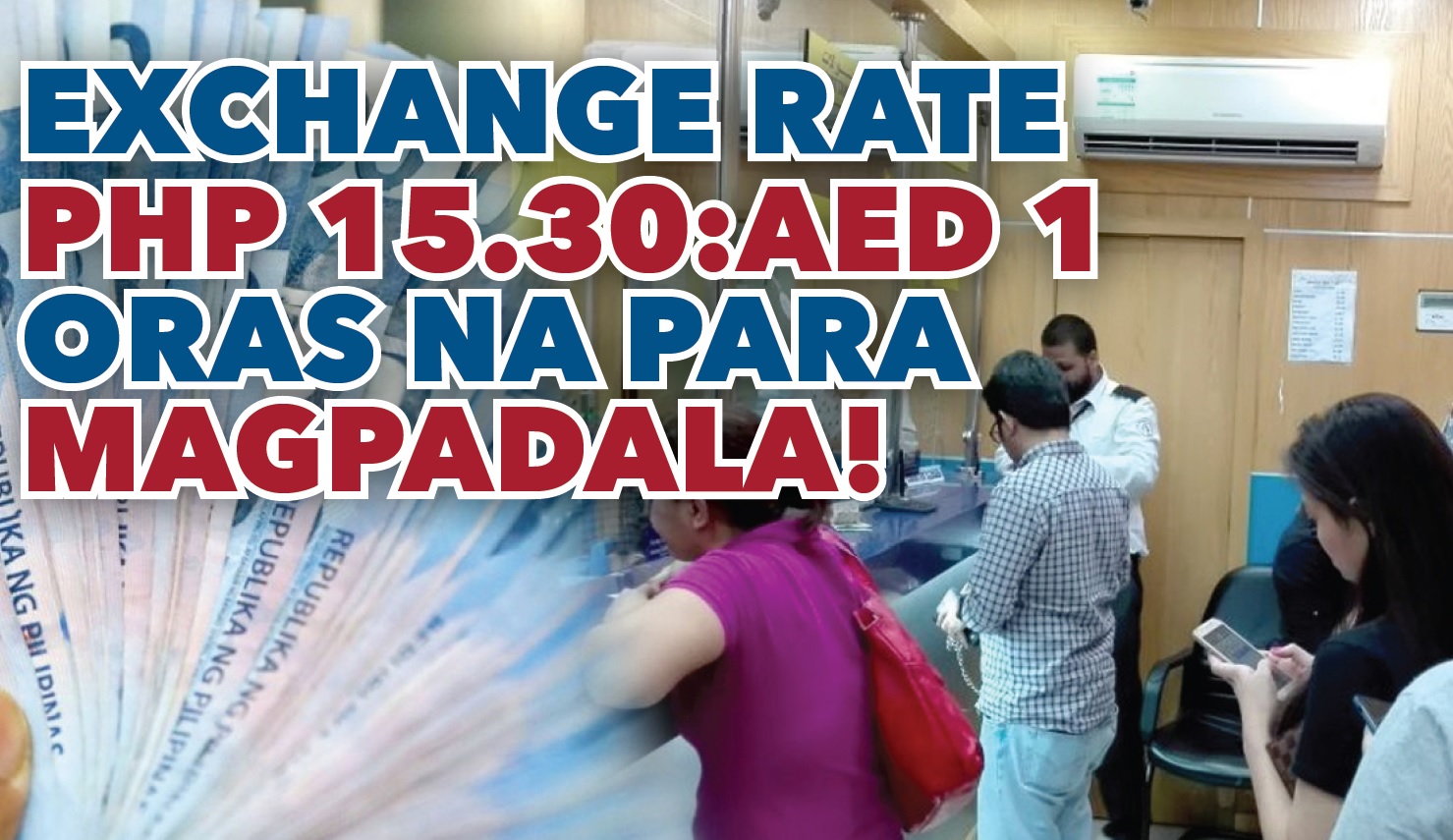Overseas Filipino workers (OFWs) are now taking advantage of the exchange rates which has reached highs of Php 15.30 per dirham as of July 23, 2022 – a rate last seen in December 2004, according to available data from Google’s exchange rate graphs. As of May 2022, this has translated to a grand total of a record $14B (Php787.5B).
OFWs from the Middle East account for $2.1 B (Php 118.1 B) in remittances or 17% of the global OFWs’ total remittances for the past five months.
Of this number, Filipinos from the UAE comprise a sizable amount of remittances from the Middle East at $490.6M (Php 27.5 B), accounting for 23% – which makes the country among the top remitters to the Philippines worldwide alongside the US, Saudi Arabia, Japan, Qatar, and Singapore.
Bigger amounts received
This remittance-friendly exchange rate is now being enjoyed by many OFWs in Dubai as seen in the comments from many OFW netizens on the Facebook page of The Filipino Times.
“Masaya po kami na mataas ang palitan. Nakakatulong sa panggastos ng pamilya ko sa Pinas,” said Gillian, an OFW based in Dubai.
Majority of OFWs also wish that the rates will remain until the end of the month, when their salaries would arrive. This is especially true for families back home who support kids at school, with the upcoming return to classes next month.
“Sana abutin pa ito ng sahuran para mas malaki ang maipadala ko lalo na’t sa susunod na buwan ay bayaran na ulit ng tuition,” said Olivia.
Inflation at home
However, several OFWs also voiced concerns about this rate. Abel, for instance, stated that the exchange rate is just a breakeven with the inflation rate in the Philippines. He stressed that his family has since asked for additional cash, due to the increase in the prices of daily groceries back in the Philippines.
“Para sa atin na OFW, maganda mataas palitan dirhams to pesos malaki maipapapadala sa Pinas. Mataas nga palitan mataas at mahal din bilihin sa atin mga commodities. Nagtataasan na lahat bilihin, pagkain, pamasahe, at gasolina sa mga sasakyan. Need budget ng family sa Pinas kada buwan pinapadala,” said Abel, who has worked for more than 10 years in Dubai.
Nagesh Prabhu, DGM, Treasury, LuLu Exchange, attributes this to the weakening of global currencies against the US dollar buoyed by the pandemic and the recent conflict between Russia and Ukraine.
“For expats looking to send money back home, now is a good time, but it is advised to be cautious of the dips and remit in installments, as it is very difficult to predict the currency’s movement accurately. There are various factors determining the direction of the markets, and it is always better to observe the trends and take advantage of real-time rates,” said Prabhu.
Analyzing inflation
Rizal Commercial Banking Corp. chief economist Michael Ricafort, in an interview with the local press, states that the stronger dollar versus the peso also affects families of OFWs who have to adjust their budgets due to the rising prices of daily commodities.
“Whatever gains OFWs and their families have due to the more peso proceeds in exchange for the dollars, may be offset or negated by higher prices and inflation. So, there may still be a need to send more remittances due to higher inflation,” said Ricafort.
The PSA earlier reported that inflation quickened to 6.1 per cent in June from 5.4 per cent in May.
Official data from the Bangko Sentral ng Pilipinas (BSP) state that this is the highest level in two months, with May 2022 reporting a two per cent increase at $2.70 B (Php 151.9B). The gradual increase follows through from the 1.27 per cent growth of $2.67 billion in April 2022. This statistic is also higher compared to last year’s 1.99 per cent of $2.65 billion in May 2021.
“The expansion in cash remittances in May 2022 was due to the growth in receipts from land-based and sea-based workers,” as per the report from the BSP.
Worldwide, land-based OFW remittances climbed by 1.9 per cent to $1.93 billion from $1.89 billion, while sea-based OFW remittances increased by 1.3 per cent to $494 million from $488 million.
Anticipated growth
According to the latest forecast from the Bangko Sentral ng Pilipinas, remittances from overseas Filipino workers (OFWs) would increase by 4% in 2022 and 4% in 2023.
OFWs remitted a record-breaking $34.88 billion in 2021, accounting for 8.9 per cent of the country’s GDP (GDP). This is a 5.1 per cent rise over the previous year’s figure of $33.19 billion.
‘The growth in personal remittances reflected a pickup in OFW deployment, strong demand for OFWs amid the reopening of host economies to foreign workers, and the continued shift to digital support that facilitated inward transfer of remittances,’ the central bank said.
Based on the BSP’s Fourth Quarter 2021 Consumer Expectations Survey, remittance recipients spent the money on food and other family necessities (96 per cent), education (50.5 per cent), and medical expenditures (45.8 per cent), and savings (31.7 per cent).
BSP is encouraging senders and recipients to save and invest more of their remittances by promoting financial literacy among them.




